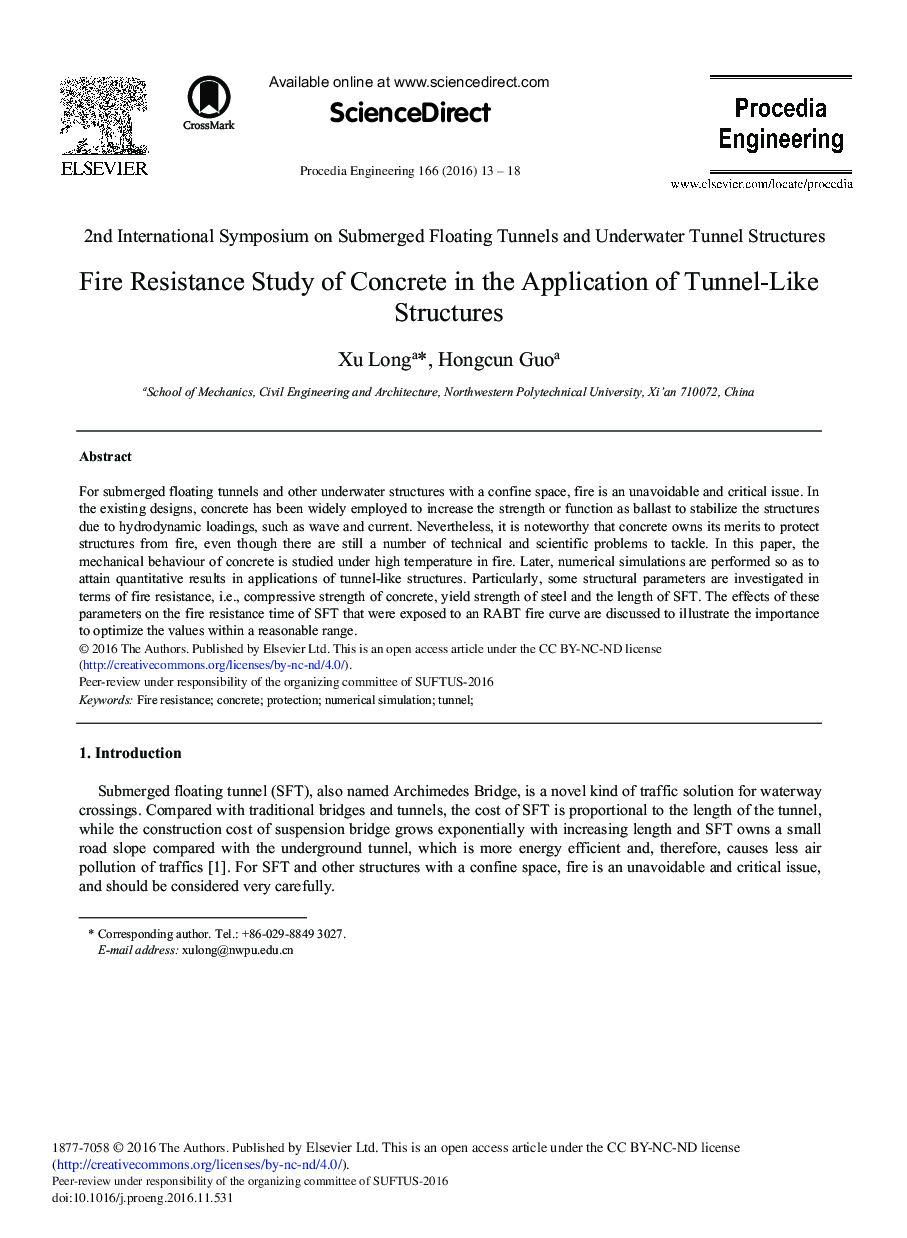| Article ID | Journal | Published Year | Pages | File Type |
|---|---|---|---|---|
| 5029254 | Procedia Engineering | 2016 | 6 Pages |
For submerged floating tunnels and other underwater structures with a confine space, fire is an unavoidable and critical issue. In the existing designs, concrete has been widely employed to increase the strength or function as ballast to stabilize the structures due to hydrodynamic loadings, such as wave and current. Nevertheless, it is noteworthy that concrete owns its merits to protect structures from fire, even though there are still a number of technical and scientific problems to tackle. In this paper, the mechanical behaviour of concrete is studied under high temperature in fire. Later, numerical simulations are performed so as to attain quantitative results in applications of tunnel-like structures. Particularly, some structural parameters are investigated in terms of fire resistance, i.e., compressive strength of concrete, yield strength of steel and the length of SFT. The effects of these parameters on the fire resistance time of SFT that were exposed to an RABT fire curve are discussed to illustrate the importance to optimize the values within a reasonable range.
